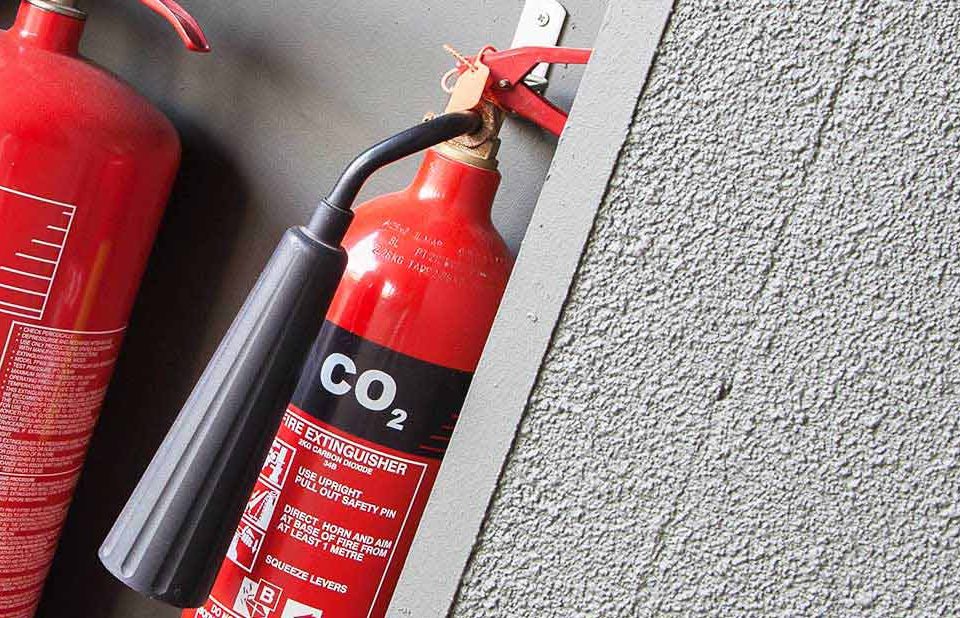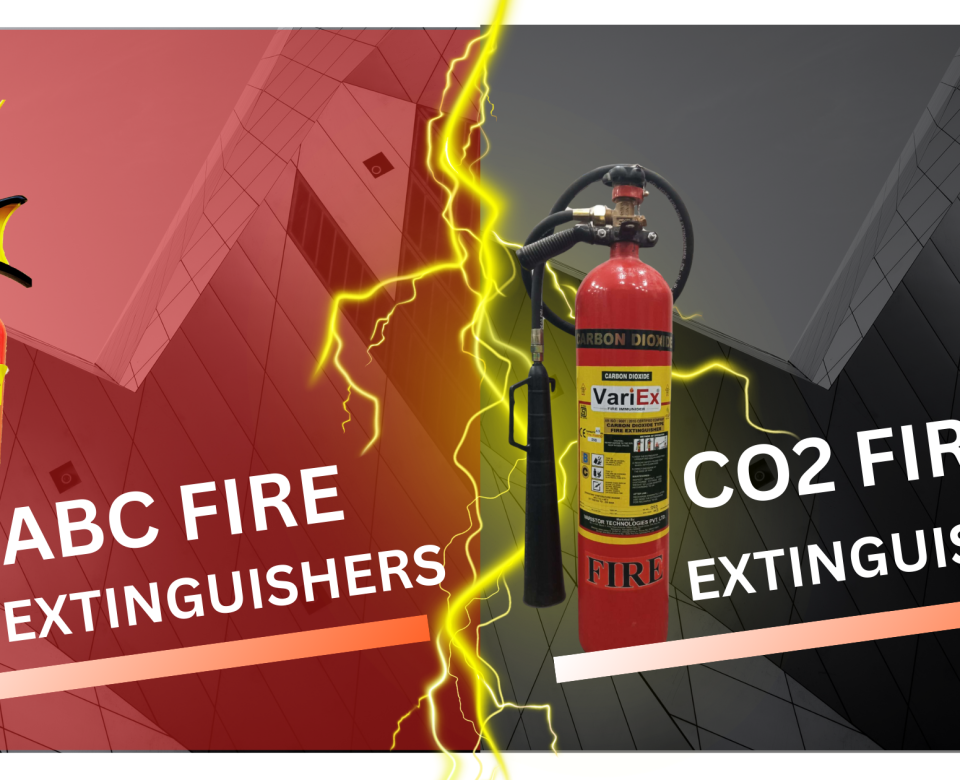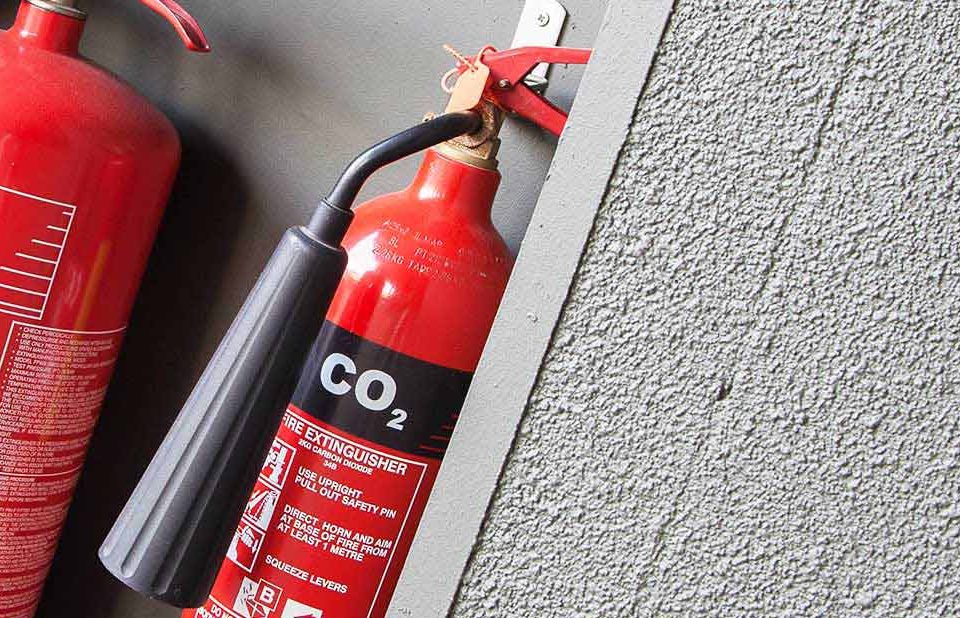
What Is the Best Type of Fire Extinguisher for Home Kitchens?
October 18, 2025
What Color is a Class K Fire Extinguisher?
October 30, 2025You’re cooking dinner when suddenly, a pan bursts into flames. Panic sets in, and your first instinct is to grab a fire extinguisher. But do you use an ABC fire extinguisher? Many people get confused about the right method to tackle a grease fire safely. Using the wrong extinguisher or method can make the situation worse or cause harm. This article explains whether an ABC fire extinguisher is safe to use on grease fires and guides you to the best fire safety practices for your kitchen.
Understanding ABC Fire Extinguishers
ABC fire extinguishers are one of the most common types found in homes and businesses because of their versatility. The letters “ABC” indicate the classes of fires they can fight:
- Class A: Fires that involve ordinary combustibles like wood, paper, and cloth.
- Class B: Fires involving flammable liquids such as gasoline, oils, grease, and paints.
- Class C: Fires arising from electrical equipment like wiring, appliances, and outlets.
The extinguishing agent inside an ABC fire extinguisher is generally monoammonium phosphate powder, a fine chemical that interrupts the fire’s chemical reactions while also smothering flames. This powder is effective on a wide range of fire types, hence the label “multi-purpose extinguisher.”
Because of their wide applicability, ABC extinguishers are an excellent general-purpose choice for homes and small businesses. However, their use on grease fires involves some special considerations.
What is a Grease Fire?
A grease fire starts when cooking oil or fat overheats beyond its ignition point and catches fire. Grease fires are particularly hazardous because of how fast they spread and their resistance to common firefighting methods. The main cause is unattended cooking or overheating the oil.
Grease fires differ significantly from fires involving wood or paper because the burning substance is a liquid oil or fat, which can splash and spread flames rapidly. Adding to the danger, using water on a grease fire only causes the burning oil to splash and spread. This is why it’s so critical to have the right extinguishing technique and equipment.
Can You Use an ABC Fire Extinguisher on a Grease Fire?
Yes, an ABC fire extinguisher can be used on a grease fire, but only with caution. The dry chemical powder smothers the flames effectively by separating the oxygen from the fire and interrupting the chemical chain reaction. However, there are some important factors to consider:
- Mess and Cleanup: The powder can leave a thick residue that is difficult to clean off appliances, kitchen surfaces, and cookware.
- Appliance Damage: The chemical powder may harm some sensitive electronic components in kitchen appliances.
- Food Contamination: The powder contamination on food or cookware can pose health risks if not thoroughly cleaned.
- Visibility: The cloud of dry chemical can make it hard to see and breathe if used indoors improperly.
While ABC extinguishers put out grease fires, these downsides make them less ideal for kitchens than certain specialized extinguishers.
The Best Type of Fire Extinguisher for Grease Fires
When it comes to kitchen fires, especially grease fires, a Class K fire extinguisher is the best tool. Class K extinguishers are designed specifically for fires involving cooking oils and fats. Here’s how they work:
- They use a wet chemical agent that cools the fire down rapidly.
- The agent also creates a soapy foam layer on the oil surface, which seals it off from oxygen, preventing reignition.
- This safe foam action helps avoid splattering or spreading the fire, which is crucial in a kitchen setting.
Comparison: Class K vs. ABC Fire Extinguisher
| Feature | ABC Fire Extinguisher | Class K Fire Extinguisher |
| Fire Classes Covered | A, B, C | Specifically Class K (cooking oils) |
| Extinguishing Agent | Monoammonium phosphate dry powder | Wet chemical solution |
| Kitchen Grease Fire Usage | Effective but messy and risky | Very effective, designed for kitchens |
| Cleanup | Difficult residue cleanup | Easier to clean, less residue |
| Safety | Risk of contamination and appliance damage | Safer for food and appliances |
For kitchens, especially where deep frying or heavy cooking with oils occurs, investing in a Class K fire extinguisher or a wet chemical fire extinguisher is highly recommended.
What to Do If a Grease Fire Starts
Act quickly and calmly by following these steps:
- Turn off the heat source immediately to stop fueling the fire.
- Cover the flames with a metal lid or baking sheet. This cuts off oxygen, which will suffocate the fire.
- Avoid using water or flour, which can cause the fire to spread.
- Use a Class K extinguisher if available. If not, an ABC extinguisher can be used carefully.
- If the fire gets out of hand or spreads rapidly, evacuate immediately and call emergency services.
- Keep yourself safe; do not inhale smoke or try risky moves with burning oil.
Additionally, having a fire blanket nearby can be an effective first response to smother small kitchen fires.
Preventing Grease Fires in the First Place
Prevention is always better than cure, especially with fire safety. Follow these tips:
- Never leave hot oil unattended.
- Keep your stovetop and cooking area clean from grease buildup.
- Use cooking oils with higher smoke points that are less likely to ignite.
- Have a fire bucket, baking soda, or a fire extinguisher ball in the kitchen
- Consider investing in a fire extinguisher cylinder suitable for kitchen use.
- Regularly check your fire safety equipment and replace old extinguishers.
Common Mistakes People Make During a Grease Fire
- Using water: This only spreads burning oil and makes the situation worse.
- Throwing flour or baking powder: These can ignite and intensify the fire.
- Moving the burning pan: This risks spilling fire.
- Using the wrong extinguisher type: Such as water-based or CO2 fire extinguishers that don’t work efficiently on grease fires.
- Delaying evacuation: Safety must come before property.
Fire Extinguisher Price and Types in Pakistan
When purchasing fire safety equipment, consider the price and features carefully. In Pakistan, the fire extinguisher ball price and fire ball price vary depending on size and brand, but they offer a convenient, automatic fire suppression option for small fires.
You can find various fire extinguisher options such as:
- Fire extinguisher cylinders for home and industrial use.
- CO2 fire extinguishers, ideal for electrical fires but not grease fires.
- Car fire extinguishers, useful to keep in vehicles for quick response.
- Wet chemical fire extinguishers designed specifically for kitchen grease fires.
Prices depend on capacity and technology, so always buy from trusted suppliers.
Conclusion
ABC fire extinguishers can put out grease fires, but they are not the safest or most effective option for kitchen fires. A Class K or wet chemical fire extinguisher is designed specifically for this purpose and offers safer, cleaner, and more effective fire suppression.
Regularly inspect your fire safety equipment and ensure you have the right extinguisher or fire suppression tools, like a fire blanket or fire bucket, ready for emergencies.
If you’re unsure which fire extinguisher suits your home, kitchen, or business best, it’s wise to talk to experts.
For expert advice and quality fire safety equipment, including CO2 fire extinguishers, fire extinguisher balls, and more, contact Haseen Habib today. Protect your property and loved ones with the right fire safety solutions.




